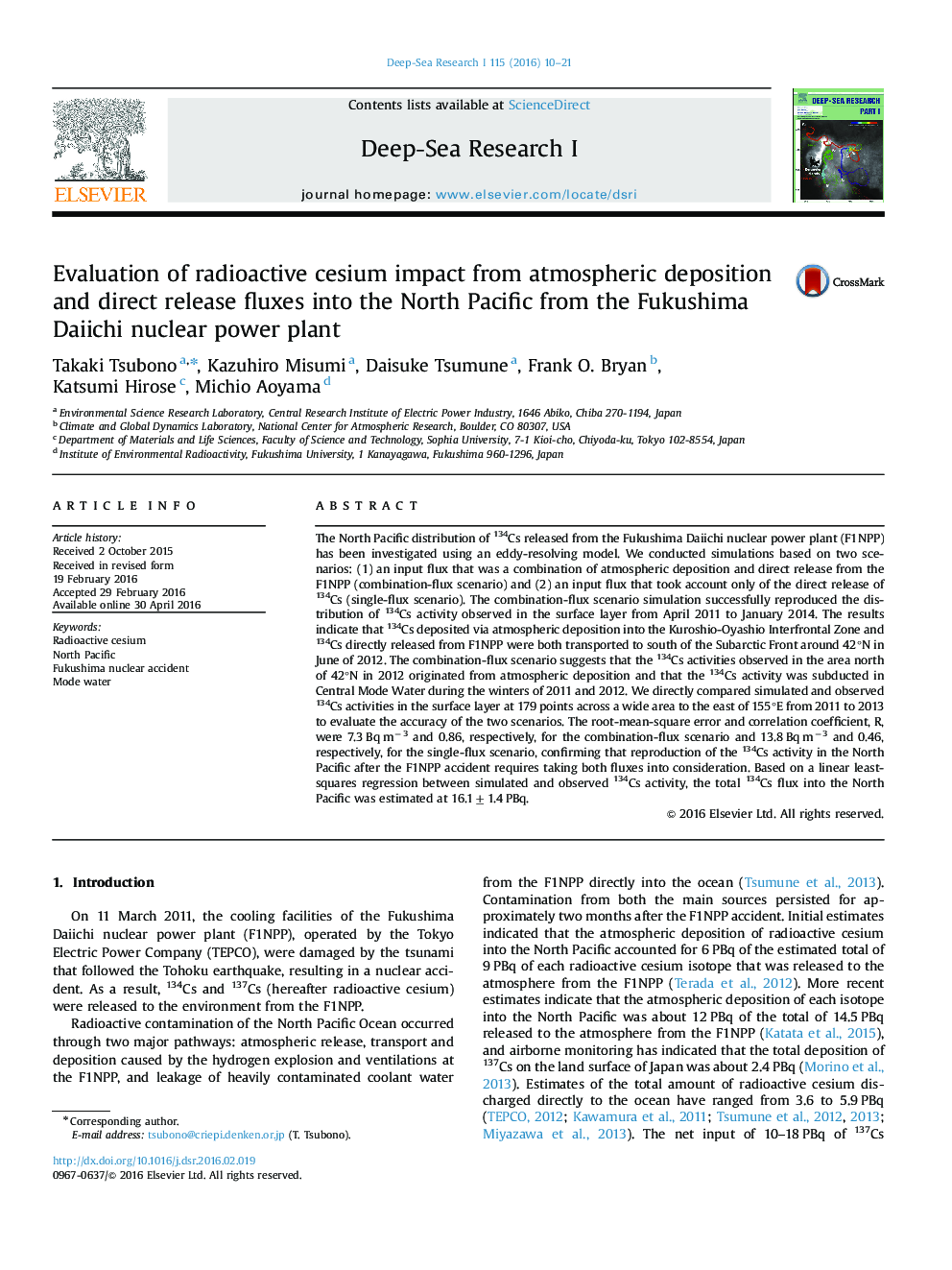| کد مقاله | کد نشریه | سال انتشار | مقاله انگلیسی | نسخه تمام متن |
|---|---|---|---|---|
| 4534406 | 1626315 | 2016 | 12 صفحه PDF | دانلود رایگان |
• The atmospheric deposition is essential to reproduce the distribution of 134Cs activity in the North Pacific after the Fukushima Nuclear accident.
• 134Cs activities observed north of 42°N in 2012 originated from atmospheric deposition.
• 134Cs from atmospheric deposition (direct release) was transported to the Central Mode Water(CMW) since April 2011 (during the winter of 2012).
The North Pacific distribution of 134Cs released from the Fukushima Daiichi nuclear power plant (F1NPP) has been investigated using an eddy-resolving model. We conducted simulations based on two scenarios: (1) an input flux that was a combination of atmospheric deposition and direct release from the F1NPP (combination-flux scenario) and (2) an input flux that took account only of the direct release of 134Cs (single-flux scenario). The combination-flux scenario simulation successfully reproduced the distribution of 134Cs activity observed in the surface layer from April 2011 to January 2014. The results indicate that 134Cs deposited via atmospheric deposition into the Kuroshio-Oyashio Interfrontal Zone and 134Cs directly released from F1NPP were both transported to south of the Subarctic Front around 42°N in June of 2012. The combination-flux scenario suggests that the 134Cs activities observed in the area north of 42°N in 2012 originated from atmospheric deposition and that the 134Cs activity was subducted in Central Mode Water during the winters of 2011 and 2012. We directly compared simulated and observed 134Cs activities in the surface layer at 179 points across a wide area to the east of 155°E from 2011 to 2013 to evaluate the accuracy of the two scenarios. The root-mean-square error and correlation coefficient, R, were 7.3 Bq m−3 and 0.86, respectively, for the combination-flux scenario and 13.8 Bq m−3 and 0.46, respectively, for the single-flux scenario, confirming that reproduction of the 134Cs activity in the North Pacific after the F1NPP accident requires taking both fluxes into consideration. Based on a linear least-squares regression between simulated and observed 134Cs activity, the total 134Cs flux into the North Pacific was estimated at 16.1±1.4 PBq.
Journal: Deep Sea Research Part I: Oceanographic Research Papers - Volume 115, September 2016, Pages 10–21
